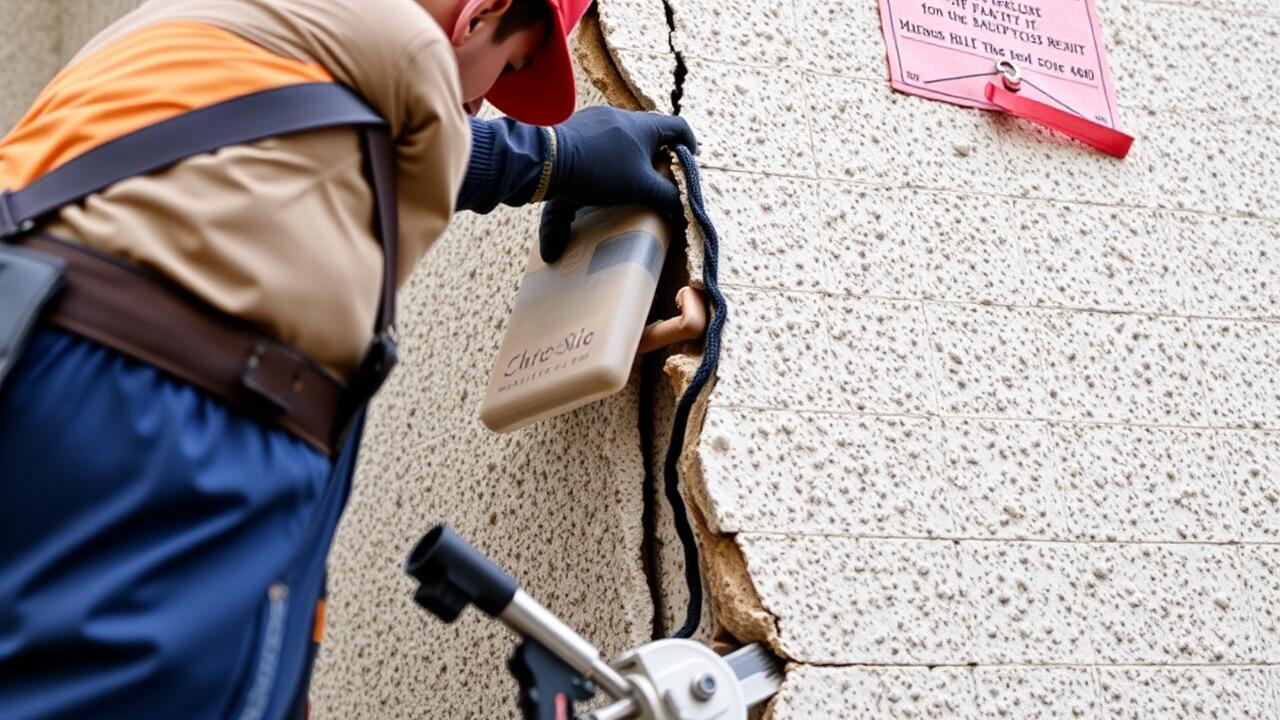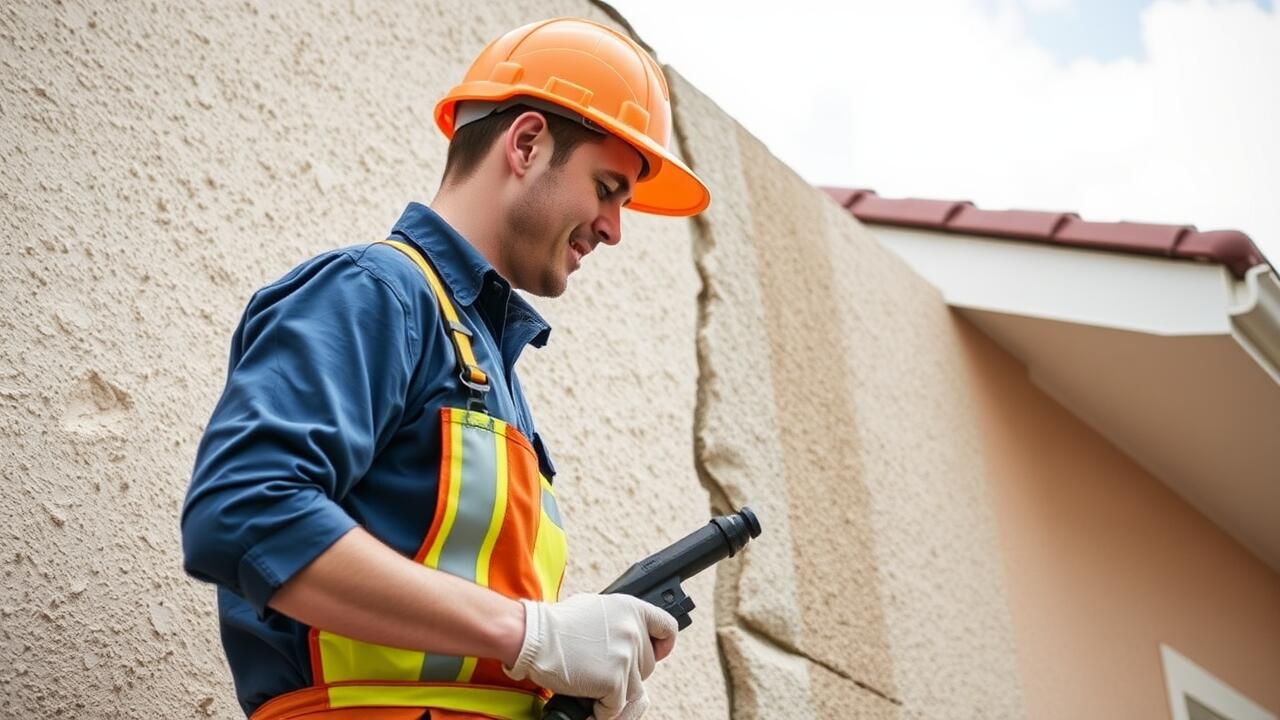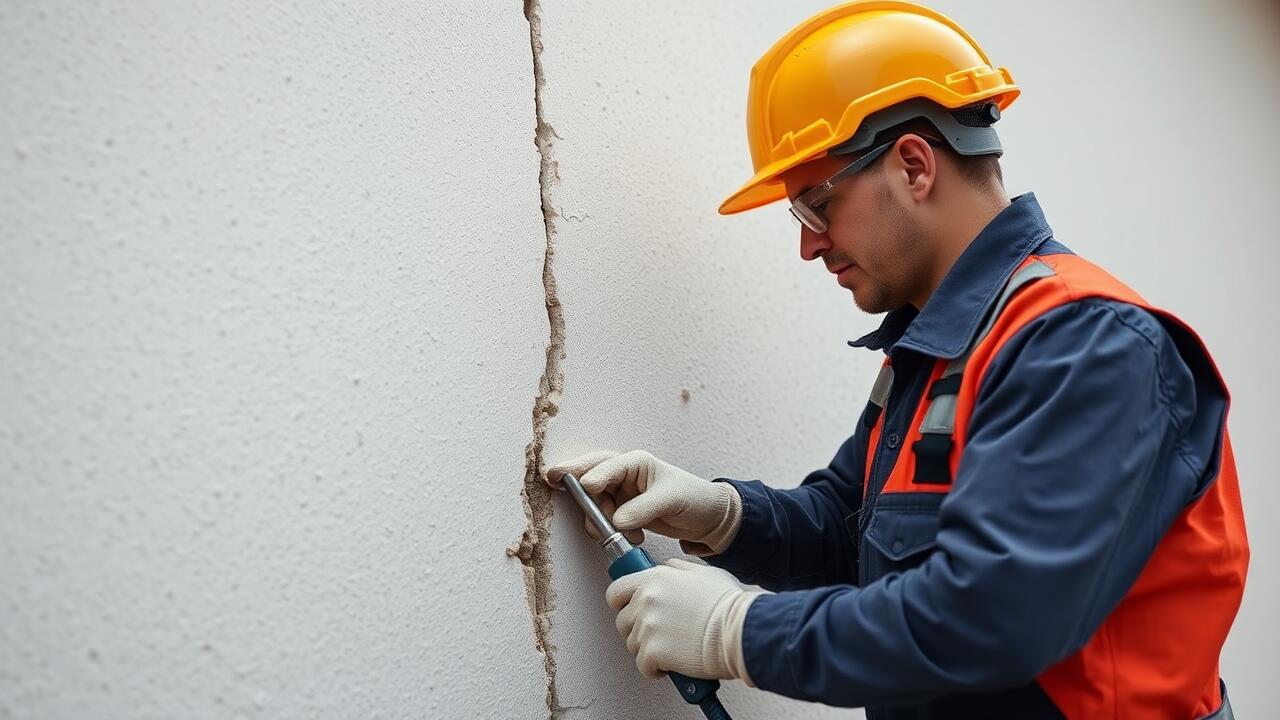
Applying the Repair Mixture
When tackling stucco cracks, selecting the appropriate repair mixture is crucial for effective results. A pre-mixed stucco patch or a blend of Portland cement, sand, and water can serve as suitable options for this task. Ensure that the mixture has a consistency similar to that of peanut butter, which will allow for easier application and better adhesion to the existing stucco. It’s essential to follow manufacturer instructions for any commercial products. An even preparation will lead to a smoother surface once the repair is complete.
Once the mixture is ready, begin applying it directly to the cracked area with a trowel. Press it firmly into the crack to fill any voids, ensuring complete coverage. For small cracks, a putty knife might suffice. In larger areas, you may need to use a hawk for better stability while applying the mixture. Stylize the surface to mirror the surrounding texture of the stucco, as this will enhance the overall appearance of the repair. For residents of Pacific Palisades, Los Angeles, integrating a professional touch through services like "Stucco Crack Repair Pacific Palisades, Los Angeles" may be an option worth considering for more extensive repairs.
Techniques for Smooth Application
Achieving a smooth application for stucco repair requires careful attention to technique. Start by ensuring the repair mixture is well-blended, free of lumps, and has a workable consistency. Applying the mixture with a trowel is often the best method, as it allows for better control and even coverage. Use a sweeping motion to spread the material over the cracked areas, making sure to fill the gaps completely. While applying, maintain a light touch to avoid introducing air bubbles or creating uneven surfaces.
Once the mixture is in place, it’s crucial to tool the repair. A stucco jointer or a rounded trowel can help create a texture that matches the surrounding stucco. Lightly pressing the tool along the edges of the repair will help smooth out any excess material. Regularly misting the area with water can assist with curing, especially in warm climates typical of locations like Pacific Palisades, Los Angeles. This practice not only promotes a solid bond but also enhances the overall appearance of the patch.
Finishing Touches
Once the repair mixture is applied, it’s important to focus on the finishing touches to ensure a seamless transition between the new and existing stucco. Use a trowel or putty knife to feather the edges of the repair. This helps to create a smooth surface that blends well with the surrounding area. For those looking to achieve a textured finish, an appropriate texture tool can be used to mimic the style of the original stucco. Always remember to apply light pressure and work slowly for the best results.
Blending the repair with the existing stucco not only enhances the appearance but also contributes to the durability of the patch. When it comes to color matching, it can be beneficial to use a small amount of the original stucco mix, if available. Alternatively, paint can be used to achieve the desired hue once the repair has cured. Residents in need of assistance with this process can consider professional services like Stucco Crack Repair Pacific Palisades, Los Angeles, to ensure a high-quality finish.
Blending the Repair with Existing Stucco
Achieving a seamless blend between the repaired area and the existing stucco is essential for an aesthetically pleasing finish. Start by closely matching the color and texture of the surrounding stucco. This often involves mixing pigments into the repair compound to get the right hue. If needed, samples can be applied to test the color before moving forward.
Texturing tools can also be utilized to replicate the existing patterns on the stucco surface. Lightly imprinting or dabbing the repair with a sponge or brush will help create a uniform texture. Careful attention to detail during this phase can make the difference between a noticeable repair and a nearly invisible fix. Homeowners in the area often seek services like Stucco Crack Repair Crenshaw, Los Angeles, to ensure that repairs blend seamlessly into the original stucco facade.
Preventing Future Cracks
Regular maintenance is crucial to preventing future cracks in stucco surfaces. Routine inspections can help identify early signs of damage, such as small fissures or discoloration. Taking the time to address these minor issues before they escalate can save both time and money later. Additionally, ensuring that the application of stucco is performed correctly can significantly reduce the likelihood of cracks. Hiring professionals for Stucco Crack Repair Pacific Palisades, Los Angeles, can guarantee that the job is done right from the start, using quality materials that enhance durability.
Proper sealing of stucco surfaces can also play a vital role in prevention. Sealing helps protect against moisture penetration, which is a common culprit in stucco deterioration. Applying a breathable sealant allows moisture to escape while preventing water from entering. Regularly reapplying the sealant, especially in areas prone to high humidity, can help maintain the integrity of the stucco. Furthermore, landscaping choices can impact the longevity of the stucco by directing water away from the foundation and ensuring proper drainage around the home.
Maintenance Tips for Stucco
Regular maintenance is essential for preserving the integrity of stucco surfaces. Routine inspections can help identify small issues before they escalate into significant problems. Look for cracks, discoloration, or areas where the stucco may be pulling away from the structure. If you notice any damage, addressing it promptly can save both time and money in the long run. For those in need of professional help, services like Stucco Crack Repair Pacific Palisades, Los Angeles, can provide expert solutions.
Proper cleaning also contributes to the longevity of stucco. Use a soft brush or a pressure washer on a low setting to remove dirt, mold, and mildew. This not only improves appearance but also helps guard against moisture retention, which can lead to cracking. Sealing and painting the stucco as needed will add an extra layer of protection. Staying proactive about these maintenance practices will ensure that your stucco remains in good condition for years to come.
FAQS
What are the common causes of stucco cracks?
Common causes of stucco cracks include settling of the foundation, temperature fluctuations, moisture damage, and improper installation.
Can all stucco cracks be repaired?
Most stucco cracks can be repaired, but the method and effectiveness depend on the size and cause of the crack. Larger structural issues may require professional assessment and repair.
How long does it take to repair stucco cracks?
The time it takes to repair stucco cracks can vary, but small cracks can typically be repaired in a few hours, while larger repairs may take a couple of days to complete.
Do I need to hire a professional to repair stucco cracks?
It depends on the severity of the cracks and your level of comfort with DIY projects. Small cracks can often be repaired by homeowners, while larger or more complex issues may require professional help.
How can I prevent future stucco cracks?
To prevent future stucco cracks, ensure proper drainage, maintain consistent moisture levels, use a quality sealant, and regularly inspect and maintain the stucco surface.


